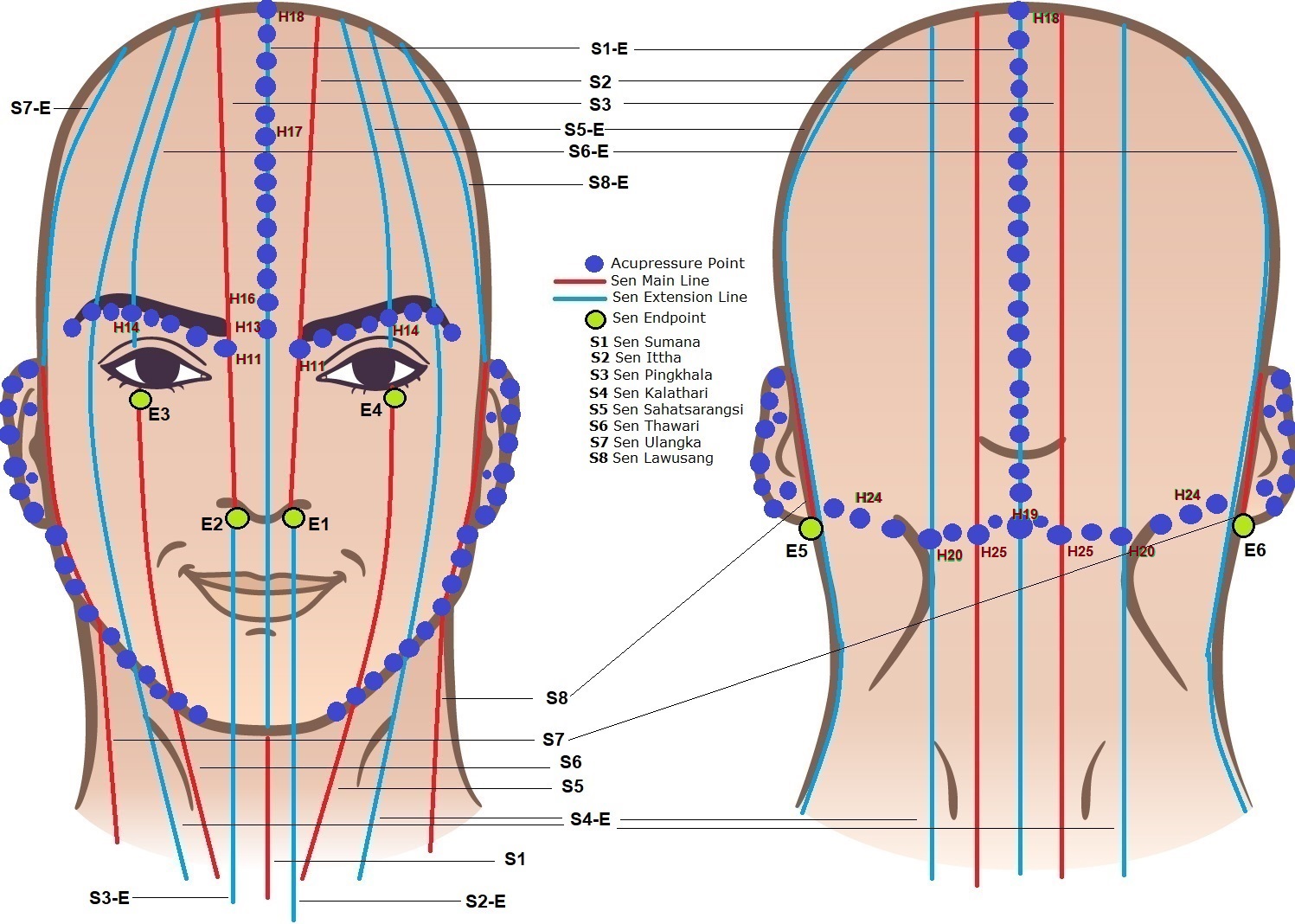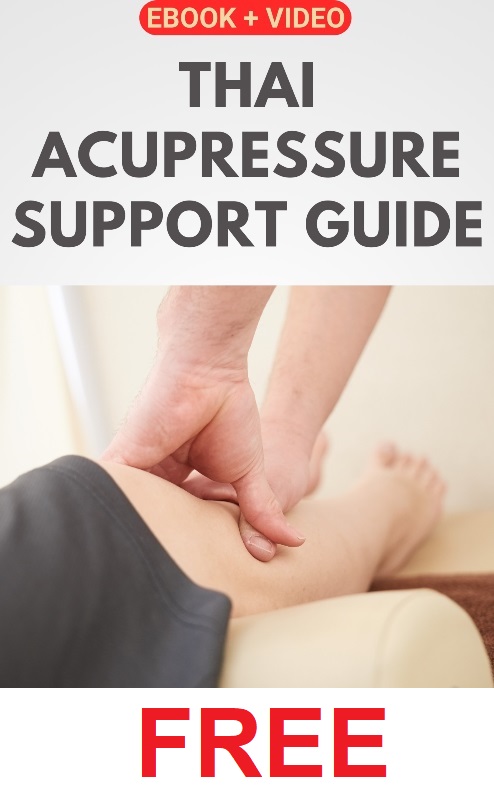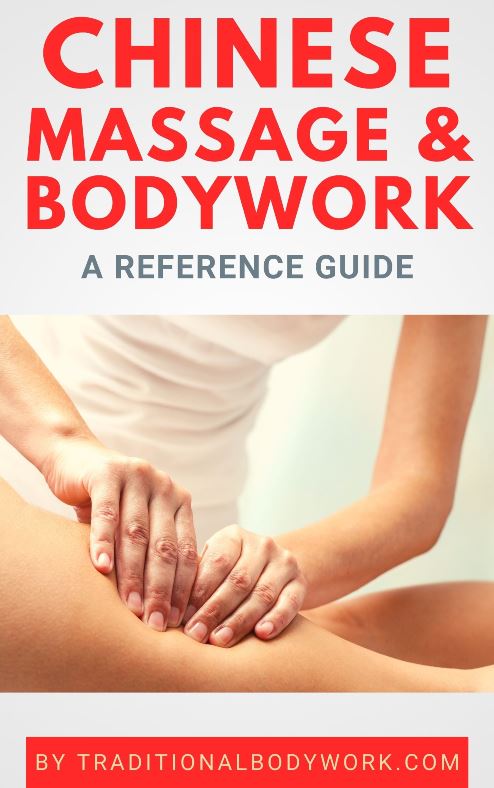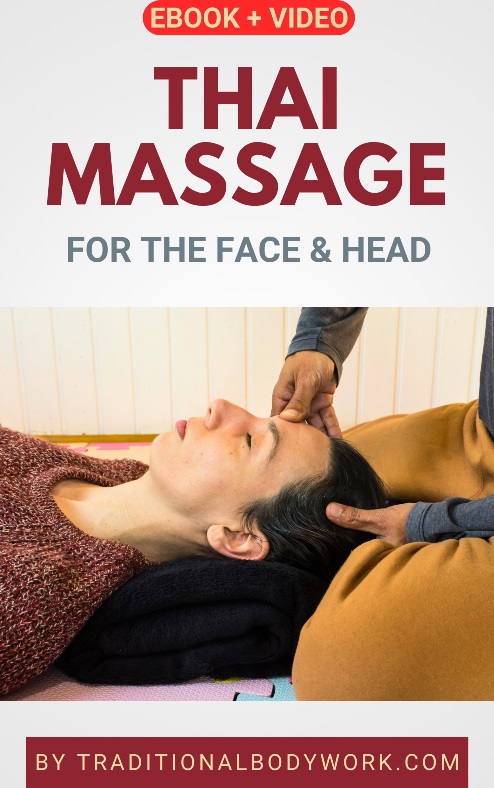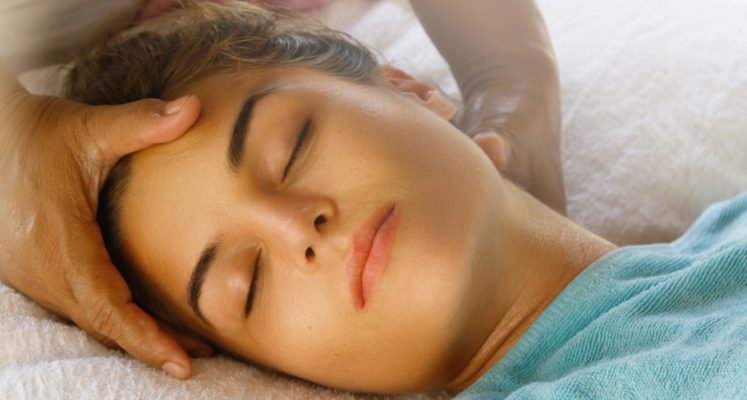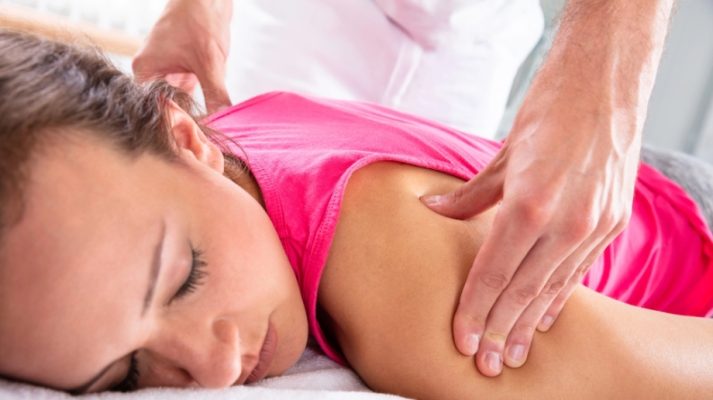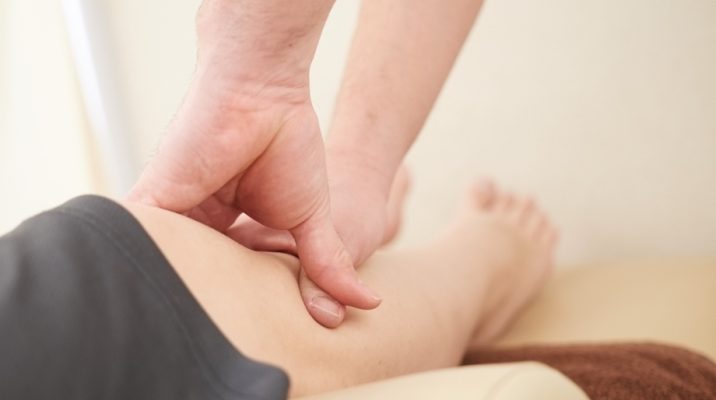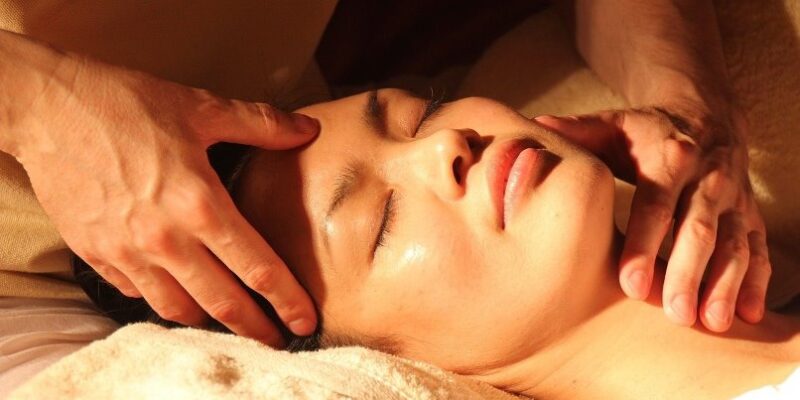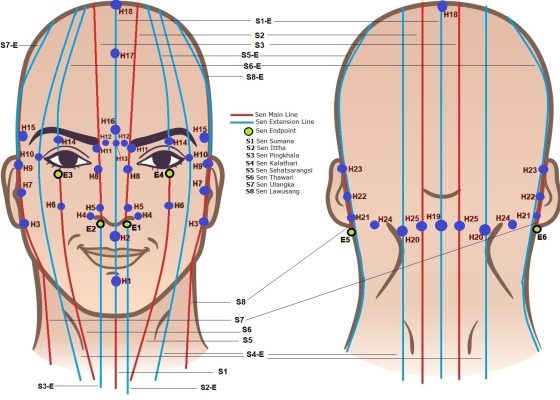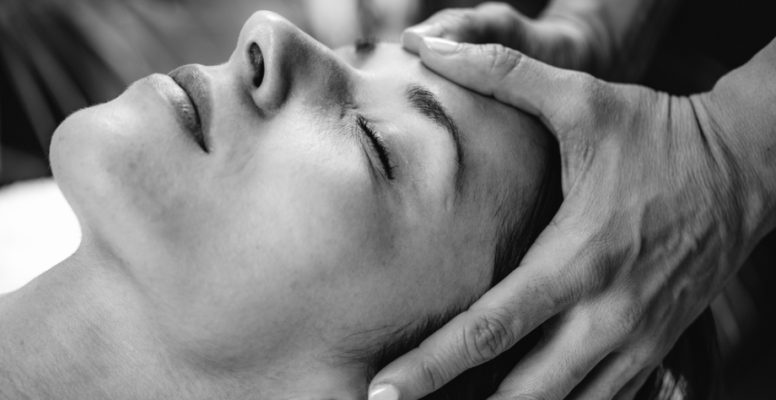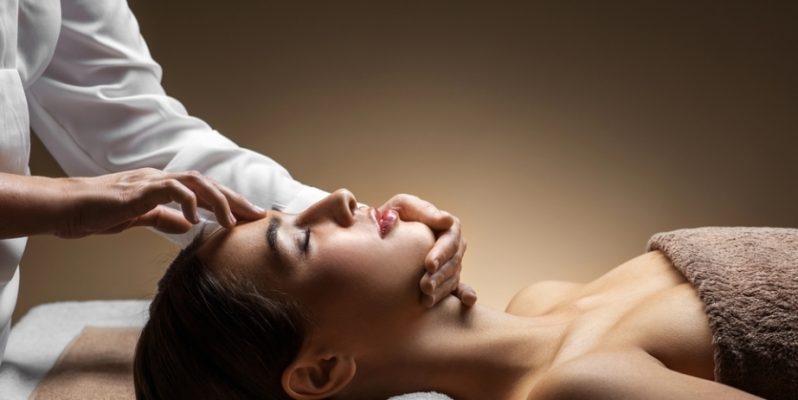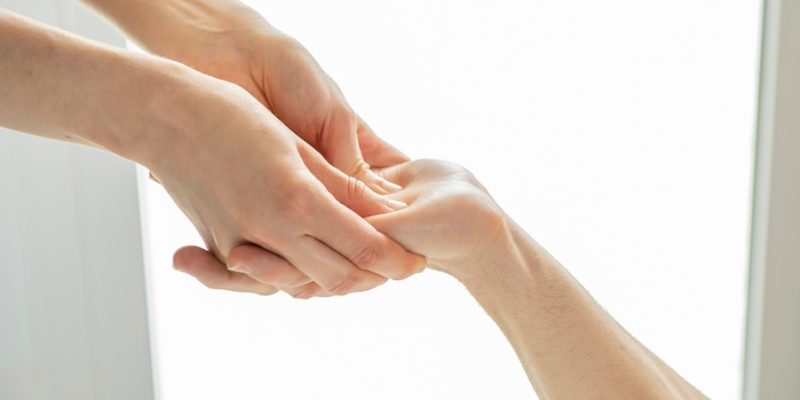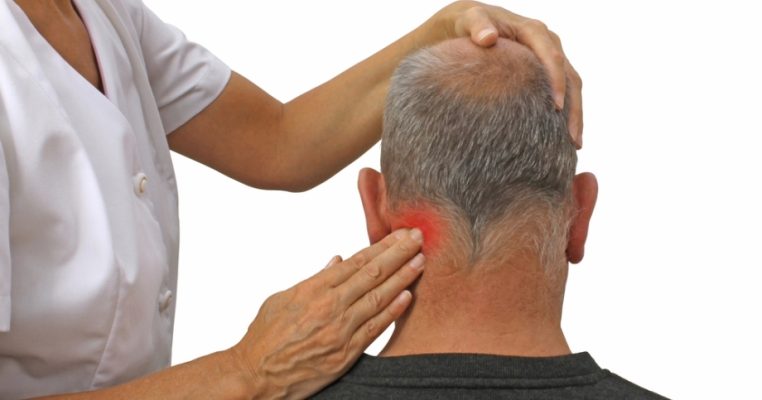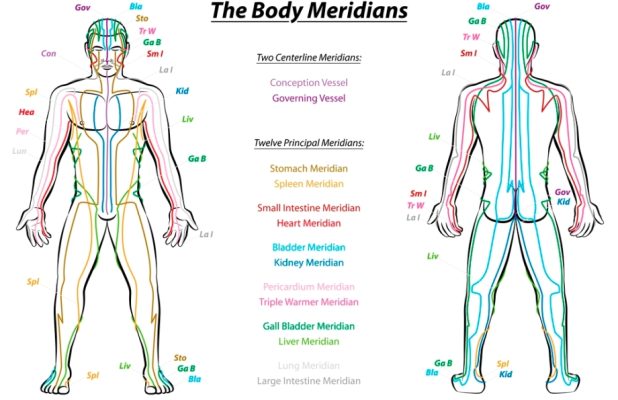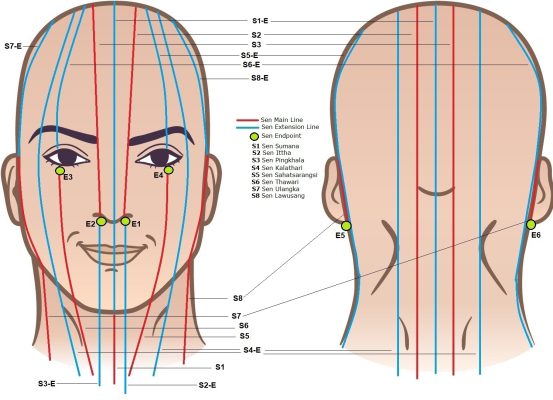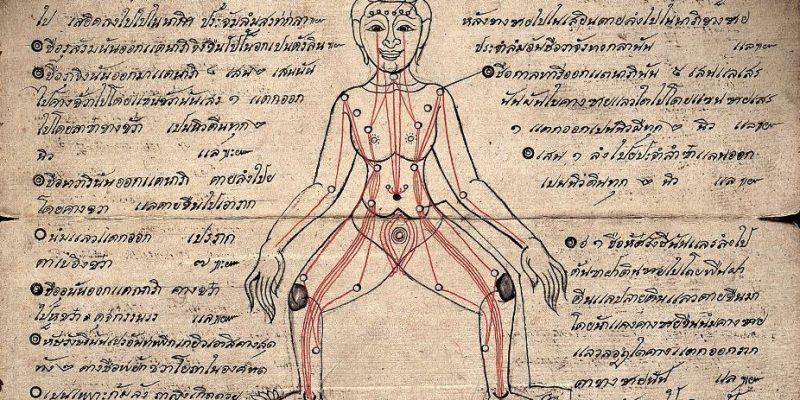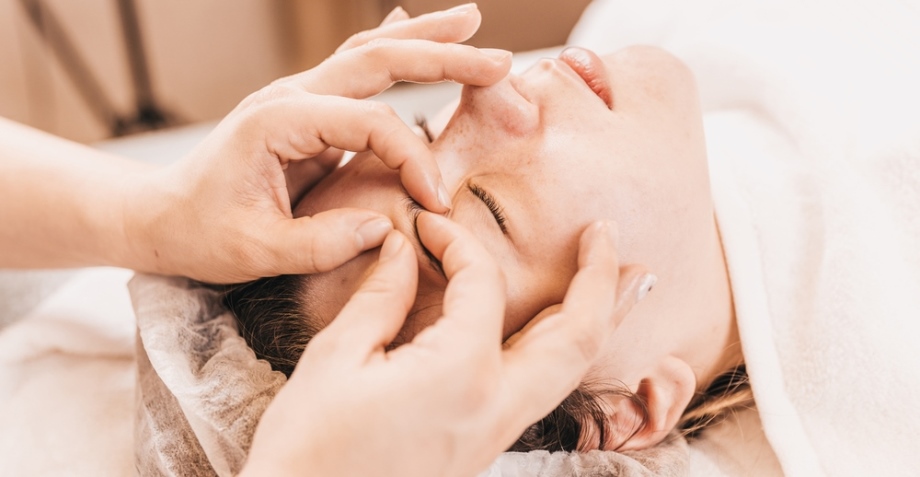
In Thai Acupressure applications, the Thai Life Force Energy Lines Sen Thawari and Sen Sahatsarangsi are the notable channels related to treating eye health problems.
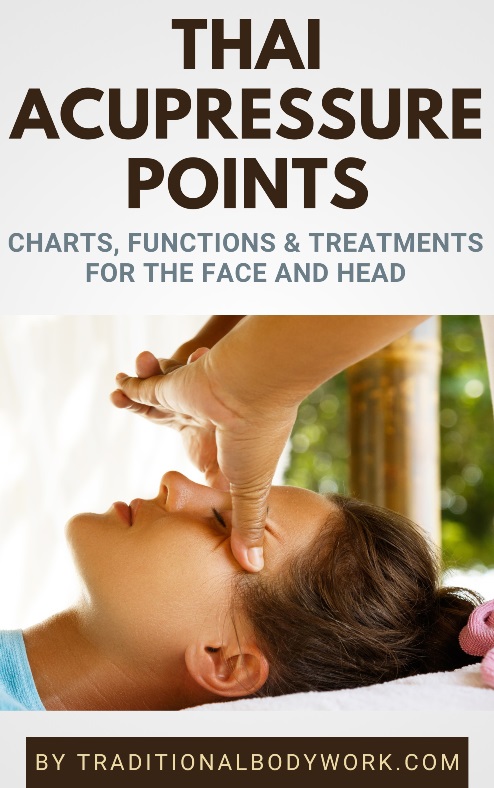
In fact, several Thai Acupressure Points that are treated to tackle vision and eye disorders are located on the aforementioned Sib Sen Lines, but some other important acupoints can be found along other Sen Lines, although all are located near or around the eyes.
In this article, we’ll discuss the locations and functions of Sen Endpoints E3 (Sen Thawari) and E4 (Sen Sahatsarangsi), and points H6, H8, H10, H11, and H14, which are specifically indicated to treat eye or vision dysfunctions.
On the facial and cranial Thai Acupressure chart displayed here further below you can see where in the face these pressure points can be found. In addition, you can treat all points around the eye orbit such as indicated in the chart Extra Points of the Face and Head, which is also displayed at the end of this post.
But let’s start with a discussion of the several pressure points just mentioned. We will look at them from out the Thai Massage perspective, but also how these points correspond to Ayurvedic and Yogic Marma Points and Traditional Chinese Medicine (TMS) Acupoints.
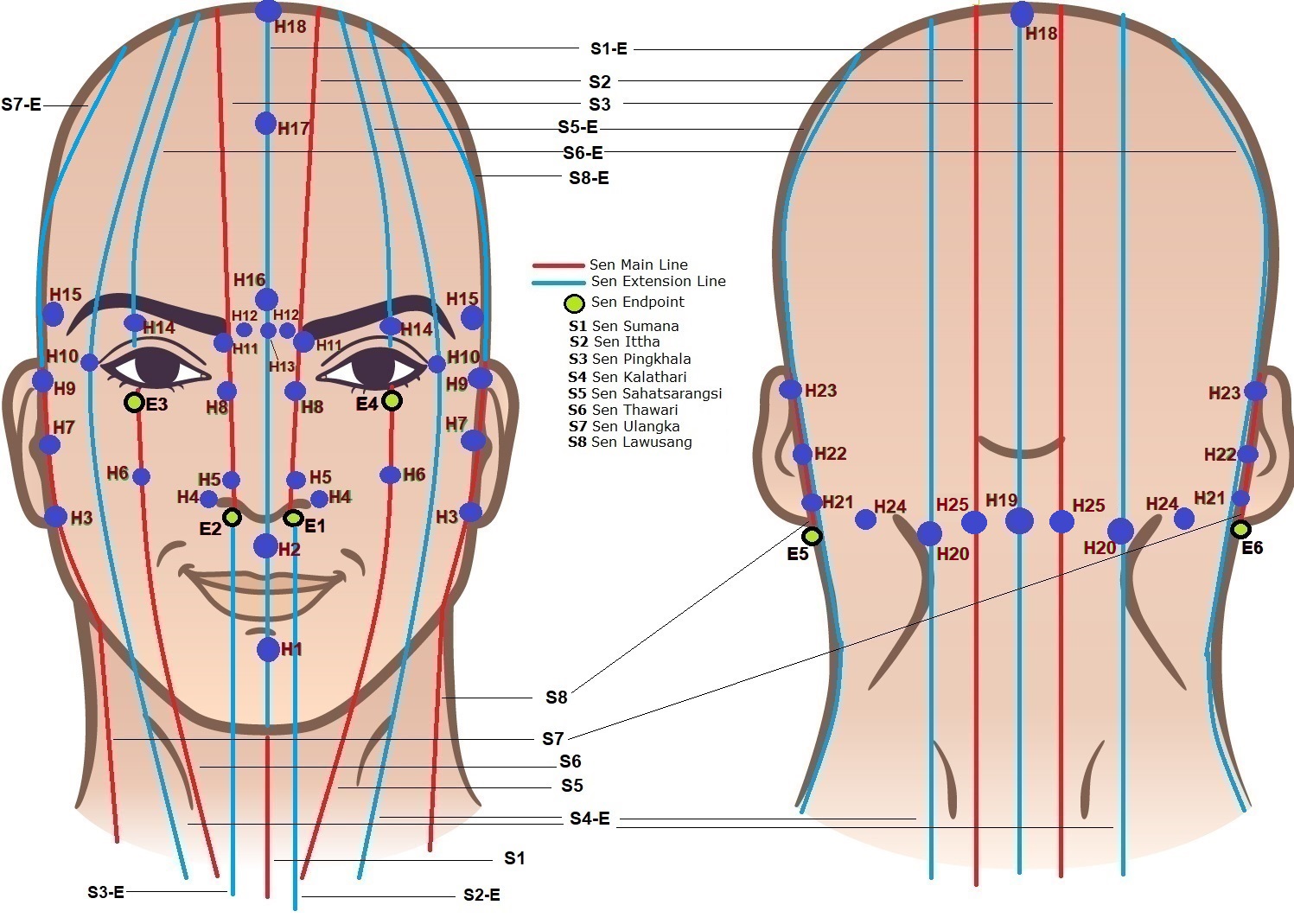
Empty background image at Depositphotos
Acupoints E3 and E4
Thai Massage
Point E3 is the endpoint of Sen Thawari (S6) and point E4 the endpoint of Sen Sahatsarangsi (S5). They can be found just below the eyeballs, more or less on the midline of the eyes, as two little indents just on top of the infraorbital ridge. It’s quite a sensitive and delicate location, and they should be approached with care and pressed gently.
They are indicated for facial paralysis, red and swollen eyes, diminished eye function, cataract, fever, and manic depression.
Ayurveda and Yoga
In Ayurveda and Yoga, the E3 and E4 points correspond relate to Madhya Vartma, which is part of the group of Marmas under each lower eyelid (Antara Vartma – near the tear ducts, Madhya Vartma – in the middle, and Bahya Vartma – outer corner).
They are indicated for a range of eye disorders, such as allergies, swollen, burning, watery and dry eyes, irritations, puffiness, blurred vision, night-blindness, glaucoma, among other issues. In addition, they are also helpful against runny nose, sinus problems, and nasal congestions.
Traditional Chinese Medicine (TCM)
In TCM, these points correspond with points Chenqi or Cheng Qi (ST-1 on the Stomach Meridian). They are indicated for a variety of eye disorders, including redness, swelling, and pain of the eyes, night blindness, twitching of the eyelids, watery eyes, itchy or dry eyes, conjunctivitis, myopia, astigmatism, squint, color blindness, glaucoma, atrophy of the optic nerve, cataract, keratitis, and retinitis, but also for facial paralysis.
Acupoints H6
Thai Massage
Acupressure points H6 can be found along Sen Thawari (S6) and Sen Sahatsarangsi (S5) on the same horizontal level as points H5.
To find H6, move from point H5 with your index finger away from the midline of the face until you are exactly under the midline of the eye, where you will feel the depression of the infraorbital foramen. Actually, points H6 are located about one to one-and-a-half finger-width distance from points H5.
The H6 pressure points are indicated for relief of issues with the lower sinuses, facial paralysis, facial pains, eye problems, but also for gastrointestinal disorders.
Ayurveda and Yoga
In Ayurveda and Yoga, the H6 points would correspond with Shringataka Marma. Although Shringataka Marma is defined as consisting of four Marma Points inside the head, it can be accessed at the spot above the surface of maxillary sinuses on either side of the nostrils. It controls the tongue and taste, hearing, sight and smell.
Traditional Chinese Medicine (TCM)
In TCM, these pressure points correspond with either point Sibai or Si Bai (ST-2 on the Stomach Meridian) or with the point a bit lower called Juliao or Ju Liao (ST-3 on the Stomach Meridian) and they are indicated for facial paralysis, sinus issues, twitching of the eyelids, redness of the eyes, nosebleeds and nose disorders, toothache, swelling of the lips and cheeks, and in general for all eye disorders.
Acupoints H8
Thai Massage
Points H8 lie along Sen Ittha (S2) and Sen Pingkhala (S3) and are related to the tear ducts. They are indicated for eye problems, insomnia, headache, and whole-body relaxation. These are acupoints that need to be treated with very gentle pressure.
Ayurveda and Yoga
In Ayurveda and Yoga, the points H8 most likely relate to Antara Vartma Marma, which is part of the group of Marmas under each lower eyelid (Antara Vartma – near the tear ducts, Madhya Vartma – in the middle, and Bahya Vartma – outer corner).
They are indicated for many eye problems, including allergies, swollen, burning, watery and dry eyes, irritations, puffiness, blurred vision, night-blindness, glaucoma, among other issues, also being indicated against runny nose, sinus problems, and nasal congestions.
Nonetheless, the H8 pressure points may also relate to Kaninaka Marma (directly at the inside corner of the eyes), which have many of the same indications as the Vartma group mentioned above, and moreover, is thought to reinforce and stimulate the Vartma group.
Traditional Chinese Medicine (TCM)
In TCM, these points correspond with acupoints Jingming or Jing Ming (BL-1 on the Bladder Meridian) at the inner corner of each eye i.e. the tear ducts.
They’re primarily indicated for problems with the eyes, such as eye redness, swelling, watering, pains and itching, night blindness, color blindness, blurred vision, and myopia. They can also combat fever and headaches that are related to eye health problems.
Acupoints H10
Thai Massage
Acupressure points H10 at both eyes are indicated for headaches, notably migraine. In addition, they’re also used to treat eye problems, sinus complaints, gastrointestinal ailments, and emotional-psychological complaints.
At the outer corner of the eyes you’ll find a little depression, which is the location of this point. They lie along the extension lines of Sen Kalathari (SE-4).
Ayurveda and Yoga
In Ayurveda and Yoga, H10 relates to Apanga Marma. This Marma Point is indicated for eye disorders, and can relieve eye strains, improve vision, and resolve pains around the eyes.
Traditional Chinese Medicine (TCM)
In TCM, points H10 correspond with Tongziliao or Tong Zi Liao (Acupoint GB-1 on the Gallbladder Meridian).
The acupoints are indicated for a variety of eye related disorders, such as redness, itch and pain of the eyes, problems with vision, myopia, tear flowing or watery eyes, deviation of the eyes and mouth, but also for headaches (especially migraine).
Acupoints H11
Thai Massage
Acupressure points H11 lie along Sen Ittha (S2) and Sen Pingkhala (S3) near the inner end of the eyebrow. Just below the eyebrows one can feel a small depression.
H11 is treated to combat headaches, but also to treat dizziness and eye dysfunctions.
Ayurveda and Yoga
In Ayurveda and Yoga, H11 corresponds with Ashru Antara Marma, which is part of the group of Marmas under each eyebrow (Ashru Antara – inner corner, Ashru Madhya – in the middle, and Ashru Agra – outer corner).
This Marma Point is usually indicated for eye related issues, stress relief, and headaches.
Traditional Chinese Medicine (TCM)
In TCM, points H11 correspond with Zanzhu or Zan Zhu (BL-2 on the Bladder Meridian).
These two acupoints are indicated for redness, swelling, irritation or pain of the eyes, twitching of eyelids, problems with vision, watery eyes, glaucoma, dizziness, epilepsy, and headaches.
Acupoints H14
Thai Massage
Pressure points H14 are located along the Sen Sahatsarangsi Extension Line (H5-E) and Sen Thawari Extension Line (S6-E), just below or at the lowest part of the eyebrow, more or less at the midpoint of the eyebrow line. You can quite easily feel the depressions that form these points.
The therapeutic indications are general headaches, eye-based headaches, eye dysfunctions, facial paralysis, and hypothermia.
Ayurveda and Yoga
In Ayurveda and Yoga, the H14 points correspond with Ashru Madhya Marma, which is part of the group of Marmas under each eyebrow (Ashru Antara – inner corner, Ashru Madhya – in the middle, and Ashru Agra – outer corner).
This Marma Point is usually indicated for eye related issues, stress relief, and headaches.
Traditional Chinese Medicine (TCM)
In TCM, acupoints H14 correspond with Yuyao or Yu Yao (EX-HN4, which is an extra point not associated with a TCM Meridian), and indicated for headaches, redness, swelling and pain of the eyes, pterygium, blurred vision, eye lid issues, and sinus problems.
Acupoint H16 (Third Eye)
Acupressure point H16 is a single point, the so-called “Third Eye,” and can be found on the Sen Sumana Extension Line (S1-E) on the midline of the face just above the eyebrows. Although the name suggests as having something to do with the eyes, this pressure point is not indicated for eye problems.
Nonetheless, it indeed has to do with “vision” and “seeing,” but than in a spiritual way, that is, it’s related to the “inner eye” which is associated with mental and spiritual clarity and insight. At any rate, you can learn more about the Third Eye point in our post The Third Eye in Yoga, Ayurveda, Tantra, Thai Massage, and TCM.
Extra Points of the Face and Head
As mentioned at the start of this article, you can also treat some extra points to alleviate or heal vision and eye issues, which you can find in the image shown below. In fact, all points around the eye orbit are indicated.
